“You can easily construct your own bespoke beat rather than relying on stock loops”: How to make fresh lo-fi beats
Stop relying on samples and loops, and build your own lo-fi beats from scratch in your DAW

If you want to try your hand at building a lo-fi track, then beats are a solid place to start. The good news is that these beats don’t need to be complex - in fact they really shouldn't be. This means you can easily construct your own bespoke beat rather than rely on stock loops.
One key component of this process is sound selection, and a bit of time sourcing the right core sounds really helps when it comes to programming the pattern and balancing the elements. Let’s take a step by step approach and get a lo-fi bop going…
Building lo-fi beats: A step-by-step guide
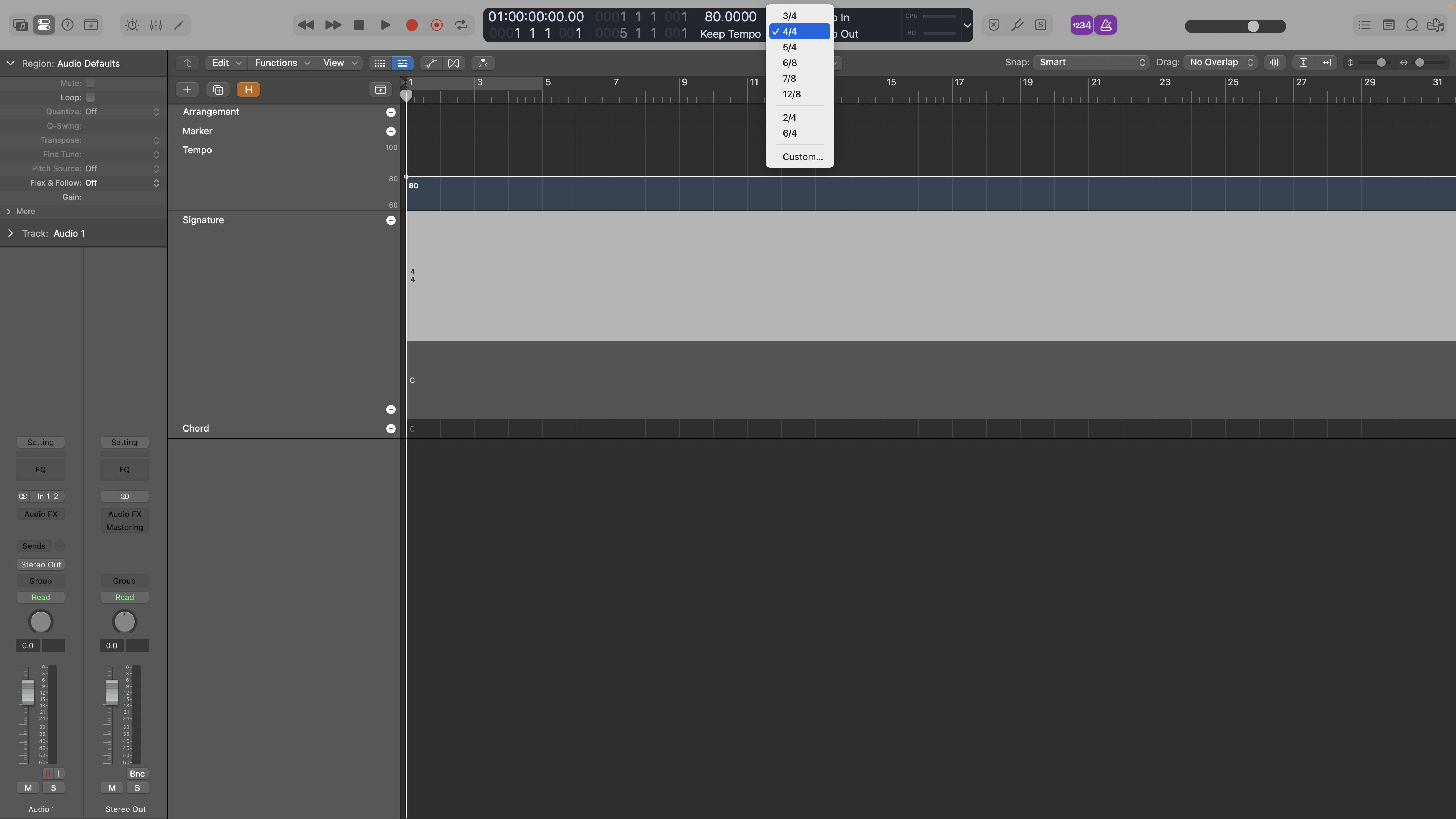
1. Lo-fi tempos are normally between the range of 60 bpm to 80 bpm and here we’re going for the upper end (80 bpm). Often the beats have a downtempo hip-hop feel and to that end we’ll be working in a 4/4 time signature.
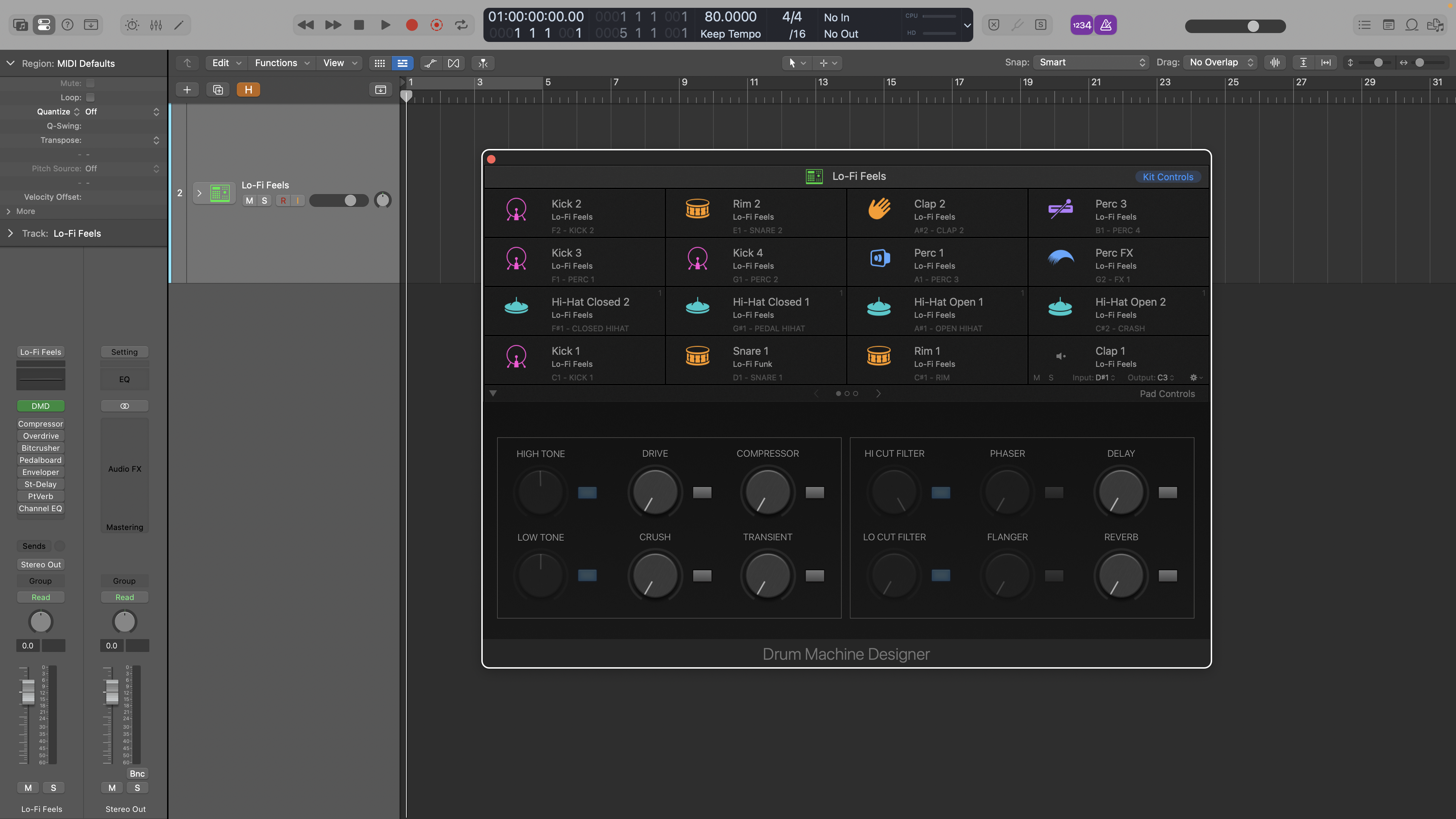
2. When sourcing sounds, timbre is important as it contributes to the overall texture of the track. You’ll find many lo-fi specific kits in sample packs and software instruments, and these provide an excellent starting point. If these aren’t available by name, then a hip-hop kit will also do the trick.

3. Here we’ve loaded a starter lo-fi kit and then swapped out the snare sound for something more suitable. You may find as you program the beat that you want to swap out or finesse further sounds. This is often more fruitful than trying to change existing sounds using processing.
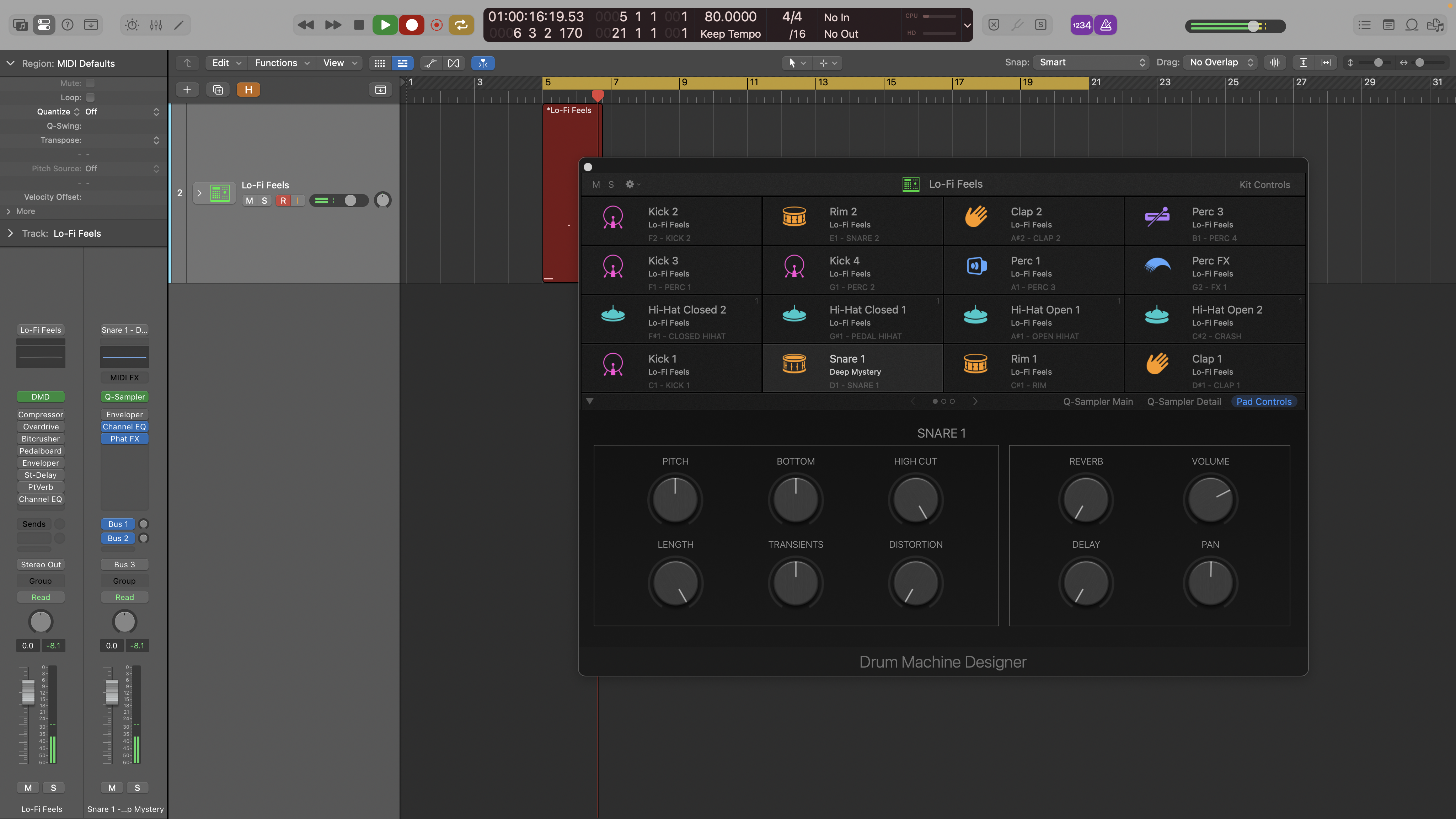
4. Now let’s program a beat. A good starting point with any lo-fi beat is some core hits that repeat across every bar, which we can then embellish to create a more interesting beat that repeats every 2, 4 even every 8 bars.
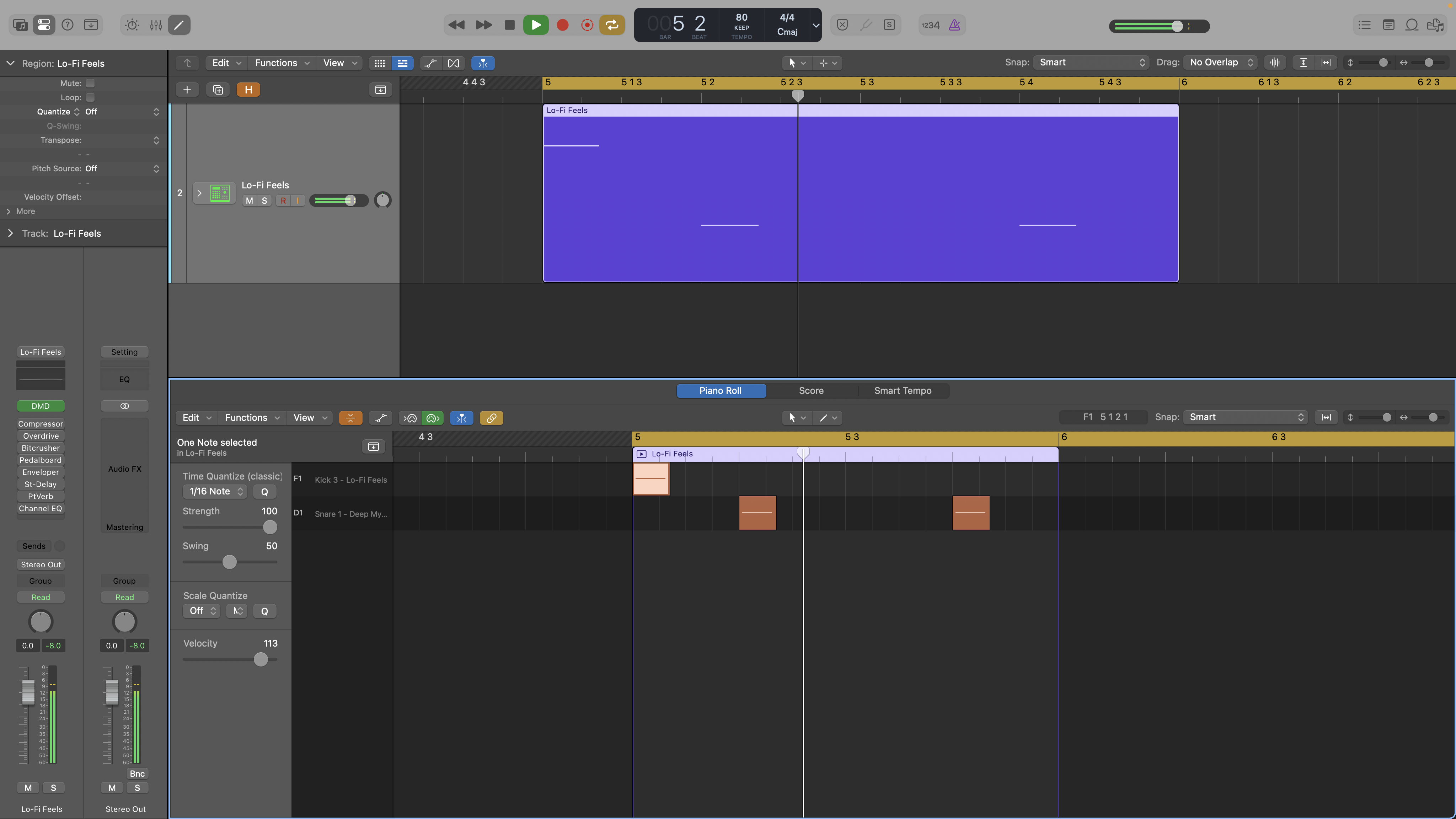
5. Our basic components are a kick on the downbeat (quarter note 1) and snare on the backbeat (quarter notes 2 and 4). Lo-fi beats often have a loose feel, so are not rigidly quantized. That said we have quantized these core beats and we'll add feel via the other hits we add.
Want all the hottest music and gear news, reviews, deals, features and more, direct to your inbox? Sign up here.
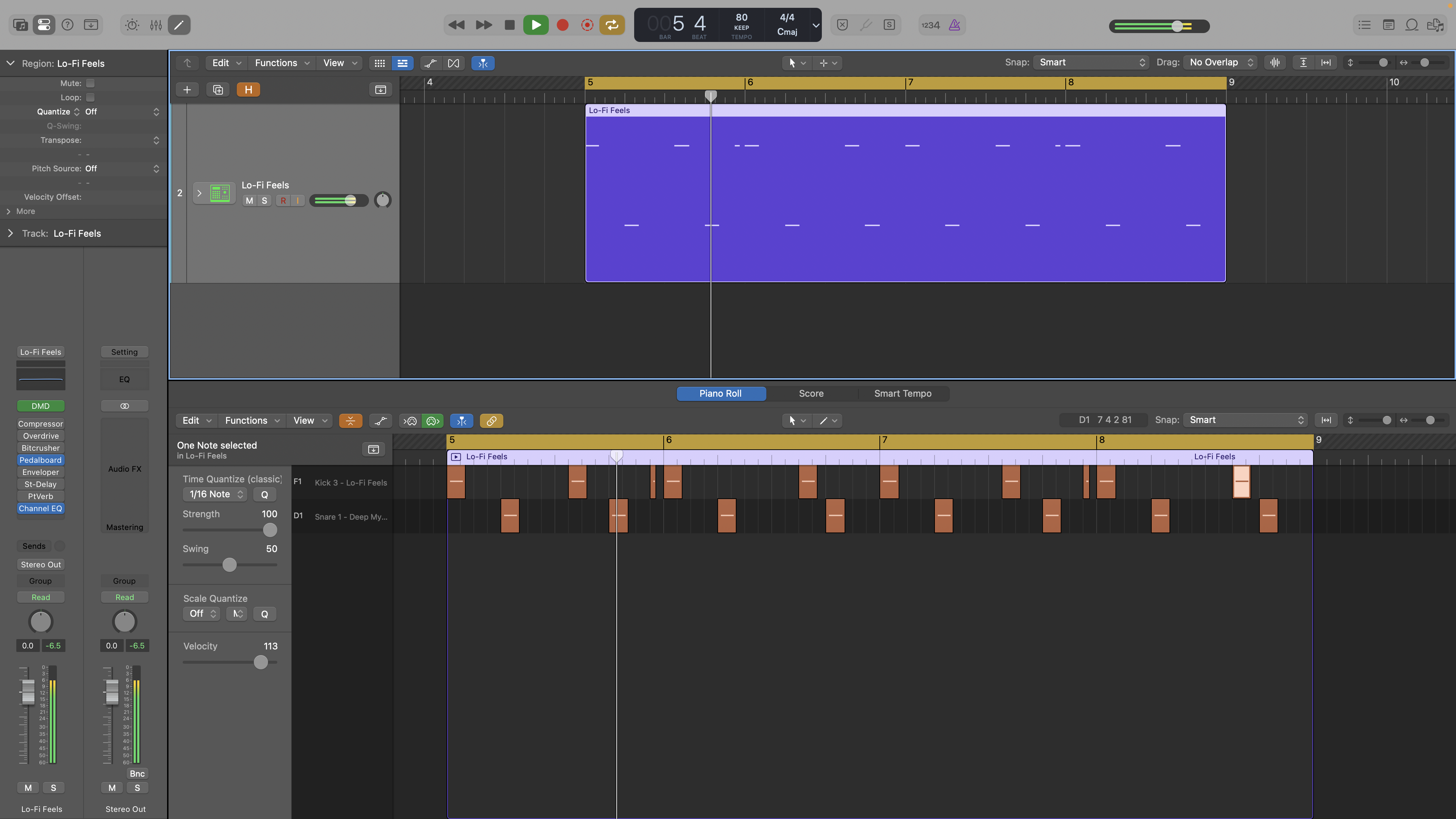
6. To develop the feel we’re going to embellish the kick pattern across a 4 bar cycle, so copy the main beats across 4 bars. Now add a grace note on the last sixteenth and an extra kick on the 10th sixteenth, both in bars 1 and 3. In bars 2 and 4 add a kick on the 11th sixteenth.
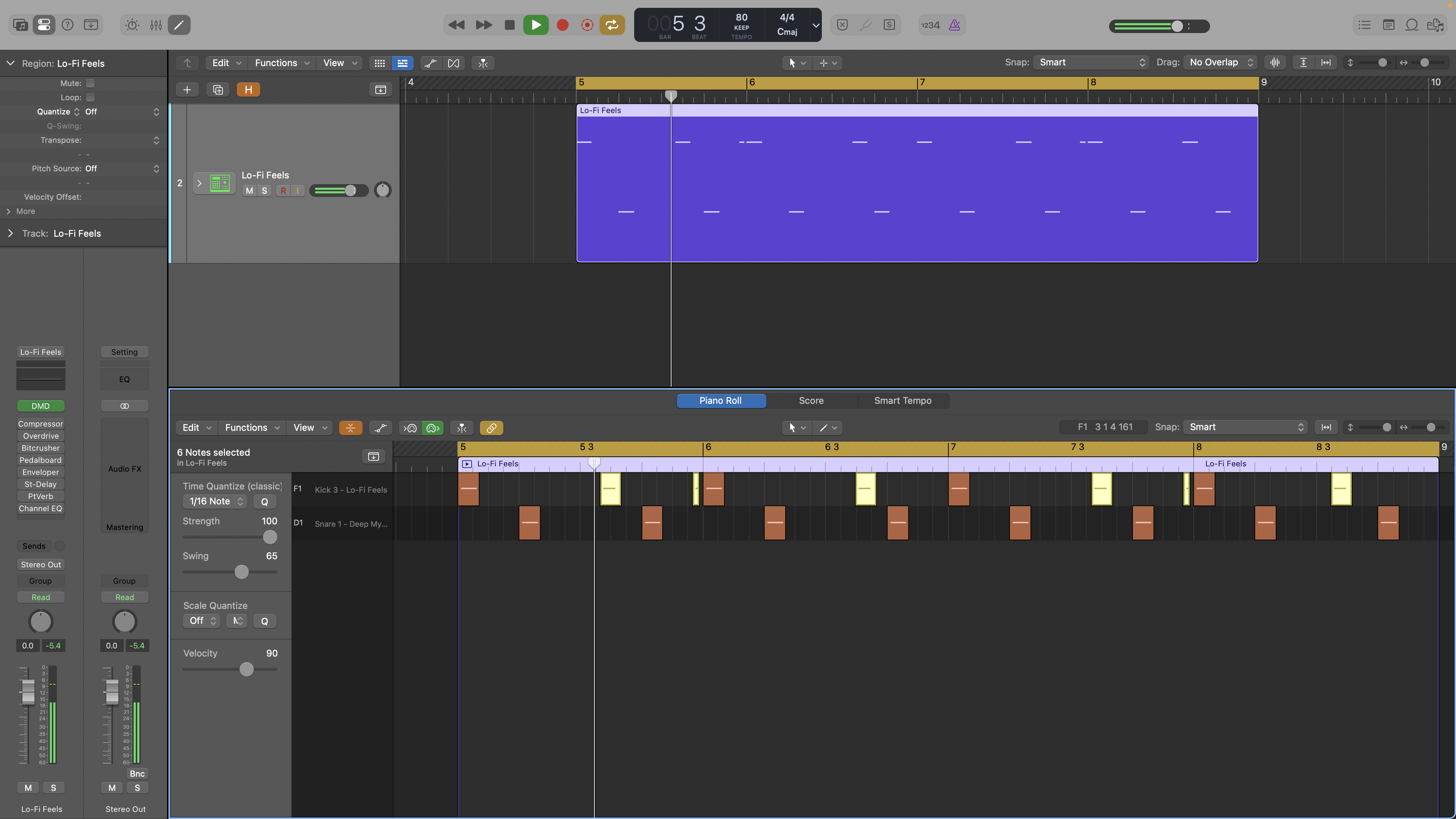
7. This is a good pattern but feels stiff. To add feel, you can shift the additional kicks manually or by applying some swing, and we’ve used the latter to shift the bar 1 and 3 kicks slightly later. Meanwhile the kicks on the 11th sixteenth (in bars 2 and 4) we’ve manually shifted very slightly earlier (see highlighted beats).
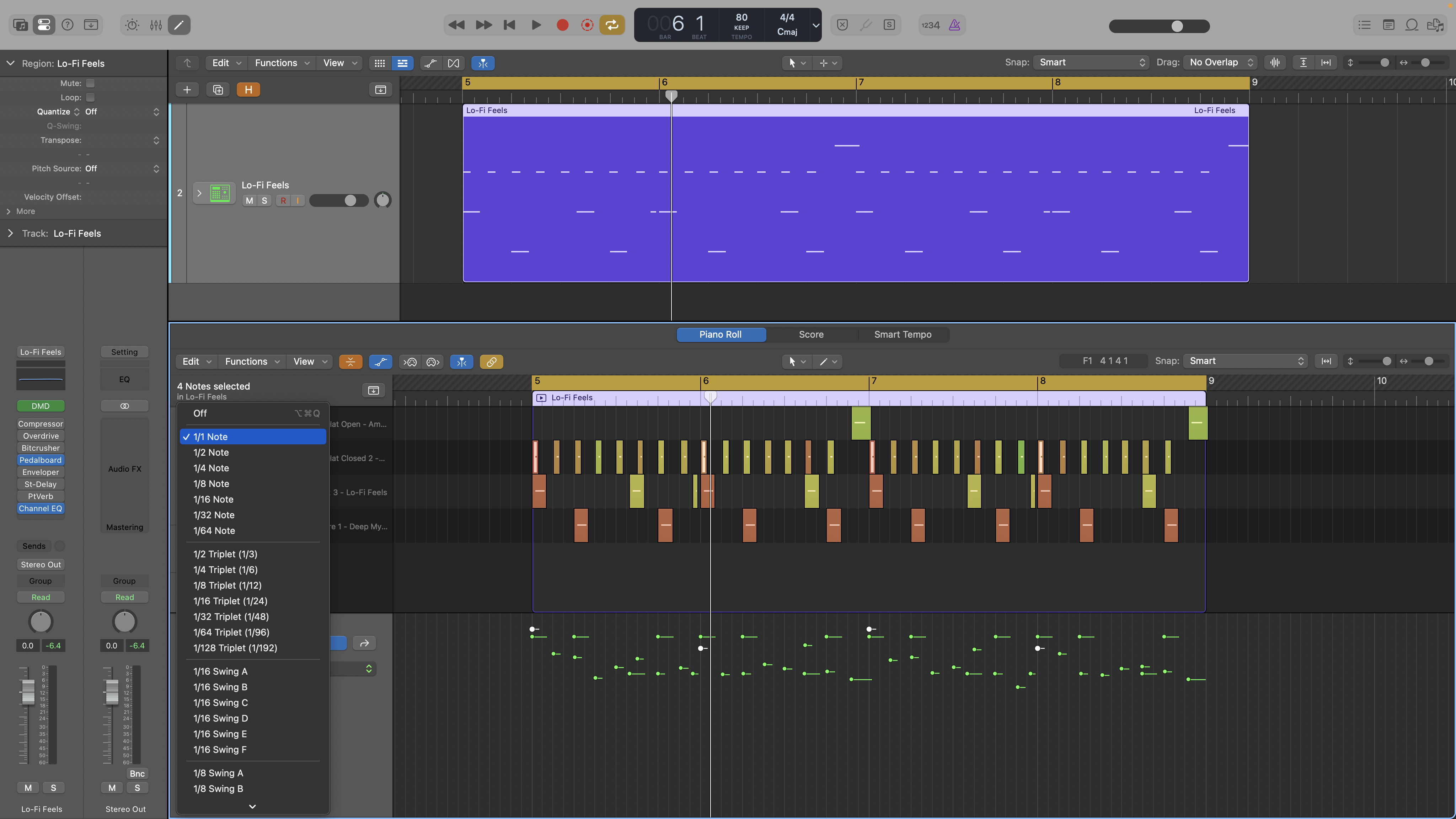
8. Now let’s move onto the hi-hats. This is something that can really add feel, and to achieve this we can use a combination of timing and velocity. Start with a basic part. We’ve gone for 8th notes with an open hi-hat on the last 8th of bars 2 and 4. We’ve played the part in and only quantized each bar downbeat.
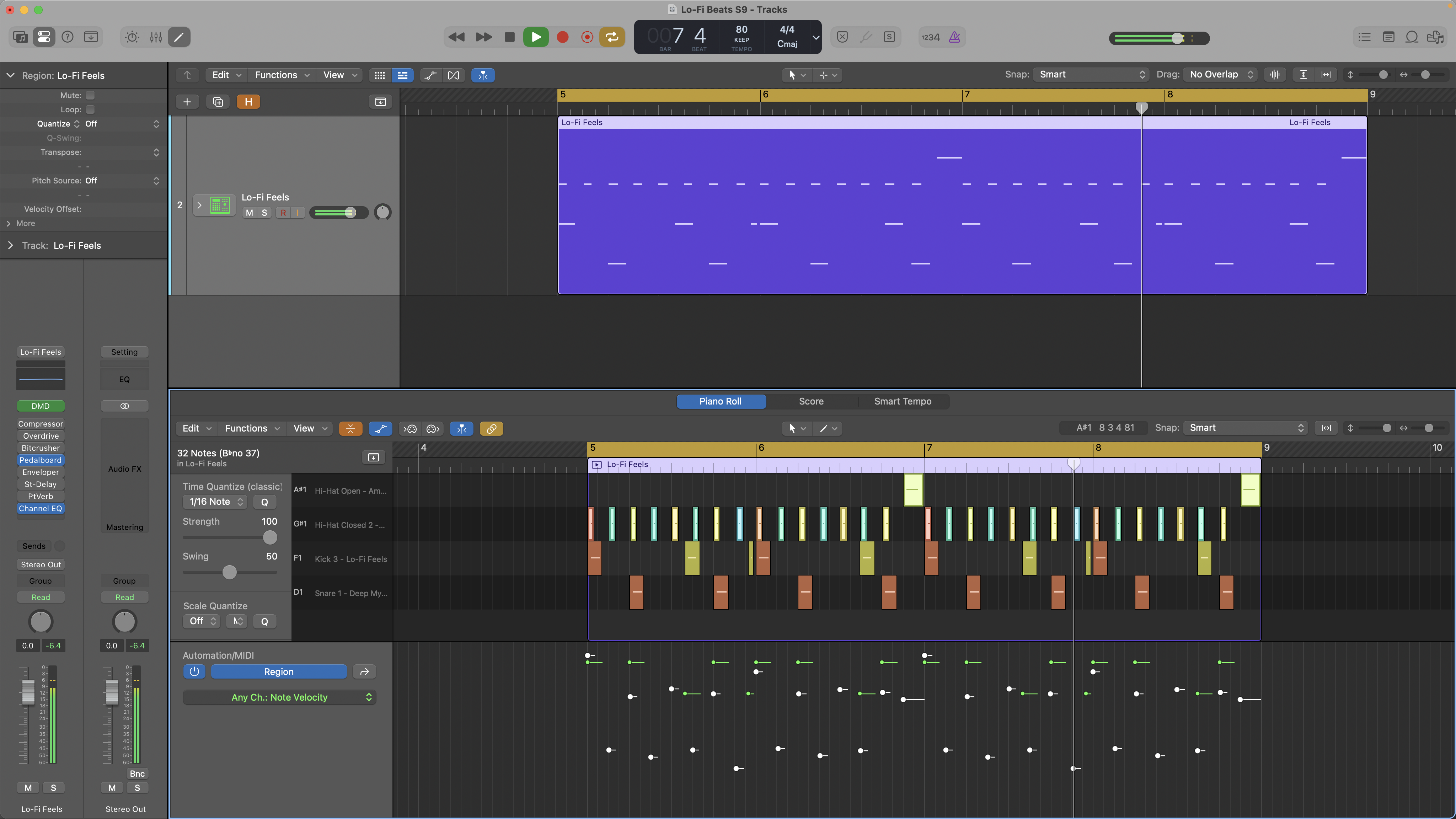
9. This is slightly too loose but by adjusting a couple of errant hits we have something with feel and can then adjust the velocity to enhance this some more. A good start is reducing the velocity on the ‘ands’ of each quarter note pair, and we’ve continued down this pathway to create structured (not random!) velocity changes.
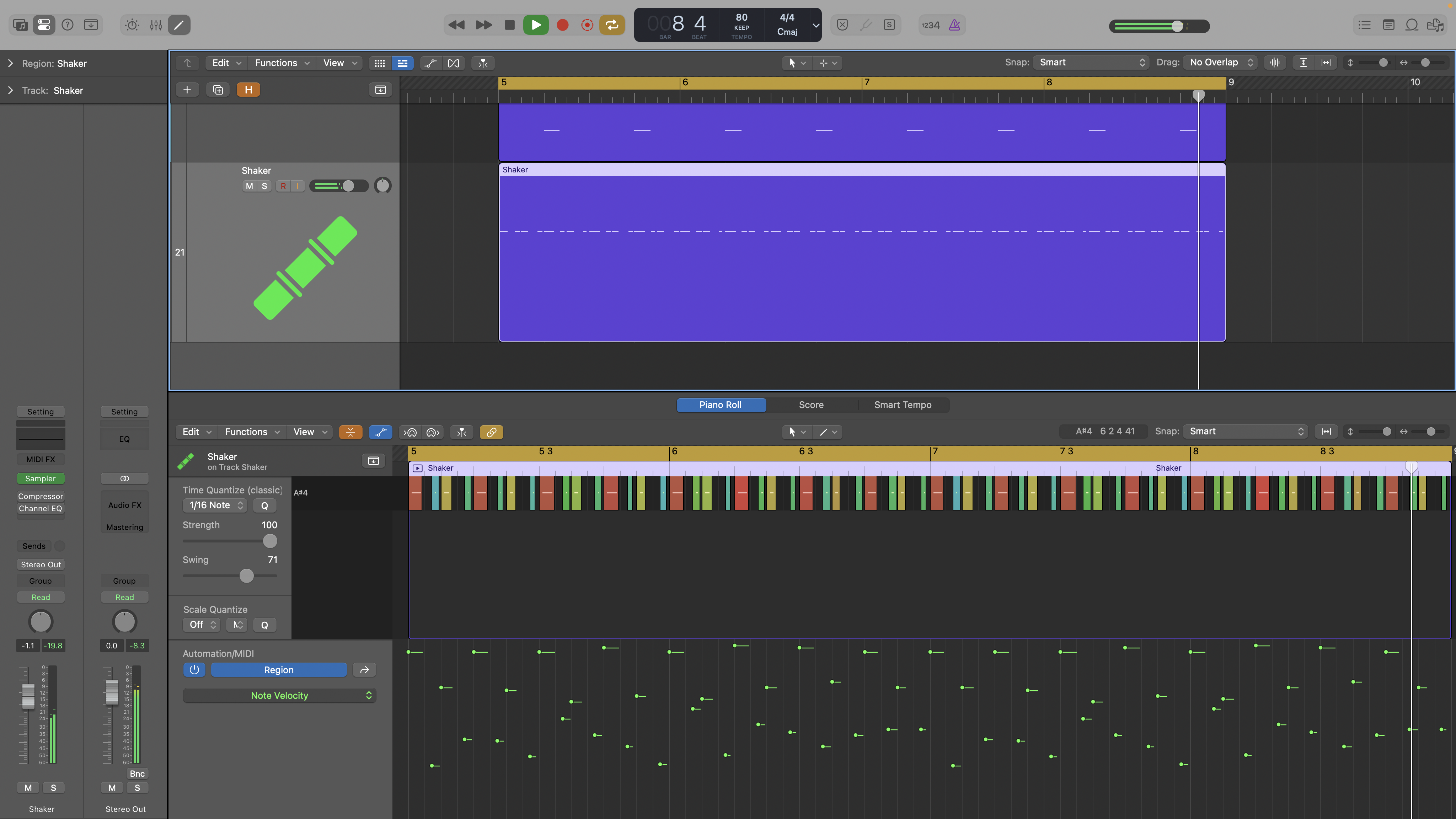
10. Adding hats may complete your beat, but if you still need a bit more swing then a subtle shaker can really help round things off. Here we’ve programmed up a shaker sound playing 16ths and then applied substantial swing so the ‘ands’ are delayed. Then much like the hi-hats some velocity changes round things off.
Jon is a London based platinum award winning mixer, producer, composer and club remixer with a diverse CV that spans dance, pop, rock and music for media. He’s also a long term contributor to MusicRadar's music technology tutorials and reviews. Whether working alone or collaborating he usually handles final mixdowns, so you’ll also find MusicRadar peppered with his handy mixing tips.
